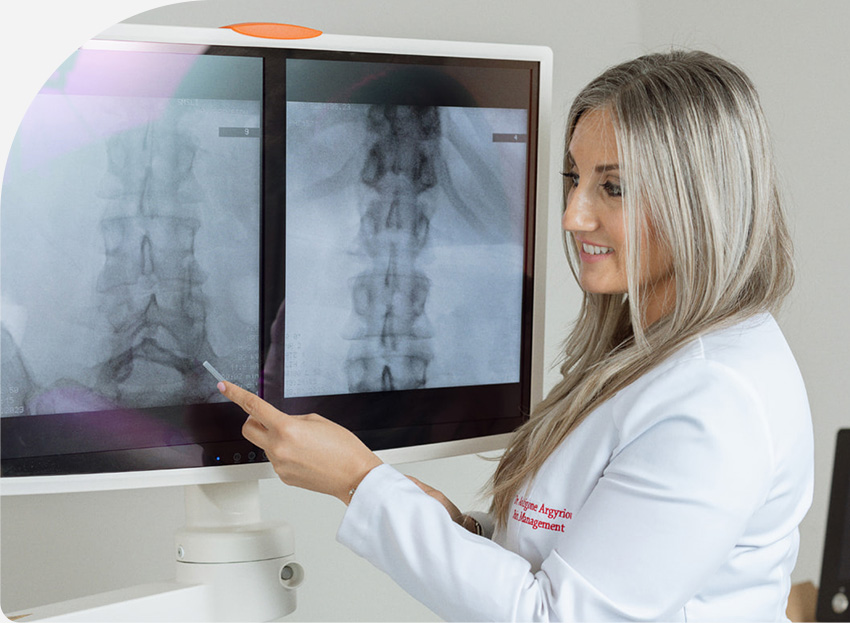Radiofrequency ablations provide long-term neck or back pain relief by ablating, or deadening, the nerves that are causing the pain. Our pain management specialist Dr. Antigone Argyriou will first do a facet joint injection or a medial branch block to locate the target nerve. She may then recommend radiofrequency ablation, which is a minimally invasive procedure.
Who Can Benefit From Radiofrequency Ablation?
If you have chronic back or neck pain and you experienced relief from a nerve block injection, you could be a candidate. Radiofrequency ablation is commonly performed to treat pain that originates in the sacroiliac or facet joints due to injury or conditions, such as arthritis of the spine.
How Does Radiofrequency Ablation Work?
Radiofrequency nerve ablation works by using heat generated from radiofrequency waves. During the procedure, Dr. Argyriou numbs the area and uses fluoroscopic (x-ray) guidance to place a needle in the precise location. A radiofrequency current passes through the needle, burning the precise section of the nerve. Once the nerve is ablated, it stops sending pain signals to the brain.

Benefits of Radiofrequency Ablation
Provides Long-Term Pain Relief
Radiofrequency ablation can give you up to two years of neck or back pain relief.
Minimally Invasive
The procedure is non-surgical and takes about 90 seconds for each site.
Recovery is Quick
Most patients are back to work in 24 to 72 hours and experience relief within 10 days.
FAQ
What kind of doctor does a radiofrequency ablation?
You’ll need to see a pain management specialist for radiofrequency ablation, Dr. Argyriou is double board-certified in physical medicine and rehabilitation and pain medicine, and she has in-depth expertise in radiofrequency ablations.
How long does radiofrequency ablation last?
Pain relief from radiofrequency ablation lasts between nine and 12 months on average. For some patients, however, the results last for up to two years.
How painful is radiofrequency ablation?
Dr. Argyriou will numb the area before the injection, so it won’t be painful. Patients usually feel more pressure during the procedure than discomfort. After radiofrequency ablation, the injection site can be slightly sore for a few days.
What is the downside of radiofrequency ablation?
There isn’t much of a downside. The radiofrequency ablation cost is much less than that of surgery, and the procedure is safe with a minimal risk of complications. Very rarely, a temporary increase in pain or infection can occur.
How many times can you have radiofrequency ablation?
If your pain returns once the nerves regenerate, radiofrequency ablation can be performed again. While every patient is unique, for most, the procedure can be repeated as often as needed.
Less Pain, More Living
Find out how we can help you achieve freedom from pain. To get started, schedule a consultation with our Long Island spine surgeon today!



